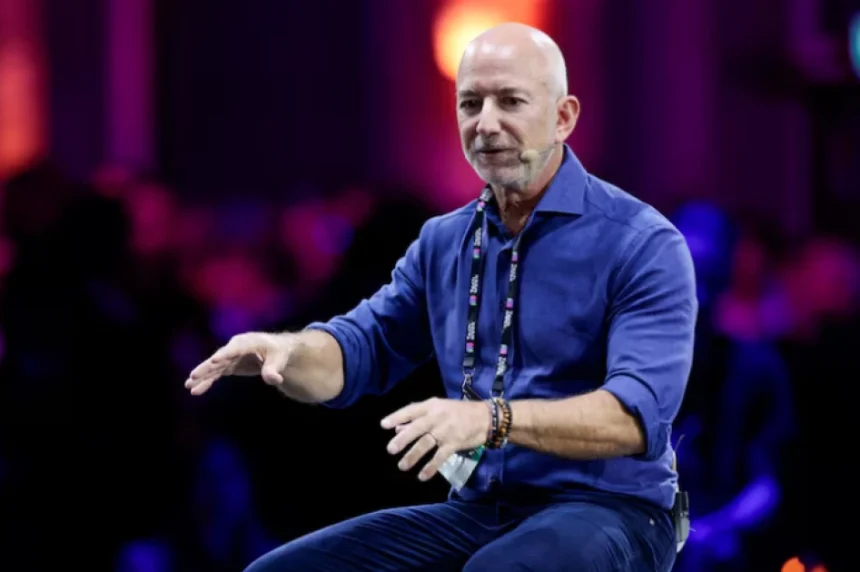As the tech industry faces mounting pressure over its environmental impact, Jeff Bezos has unveiled perhaps his most ambitious climate-tech vision yet: migrating Earth’s data infrastructure to space. This radical proposal comes at a critical moment when traditional data centers consume an estimated 200-250 terawatt-hours annually—more than some medium-sized countries—while AI’s explosive growth threatens to double these figures within five years.
The Environmental Imperative Behind Space-Based Computing
The current digital infrastructure model is hitting its sustainability limits:
-
Energy Intensity: A single hyperscale data center can demand up to 100-150 megawatts—enough to power 80,000 homes
-
Water Consumption: US data centers alone used 1.7 billion liters daily in 2023 for cooling
-
Land Use: The global footprint of data centers now exceeds 25,000 square kilometers and continues expanding
Bezos’s space solution addresses these challenges through orbital advantages:
Sustainable Benefits of Space Infrastructure:
-
Perpetual Solar Power: Orbital facilities could achieve 99.9% renewable energy utilization through continuous solar exposure, eliminating grid dependency
-
Natural Thermal Management: Space’s 3K background temperature enables passive cooling systems that are 80-90% more efficient than terrestrial solutions
-
Zero Terrestrial Resource Consumption: Complete elimination of freshwater usage for cooling and no land occupation
The Carbon Cost of Getting There
However, the environmental equation must account for launch impacts:
-
Rocket Emissions: Current launch vehicles emit 100-150 tons of CO₂ per ton of payload to low Earth orbit
-
Manufacturing Footprint: Production of space-hardened hardware carries a 40-60% higher carbon cost than terrestrial equivalents
-
Space Debris Considerations: Each new orbital installation contributes to the growing sustainability challenge in space itself
Comparative Environmental Analysis:
Our modeling suggests that despite high initial emissions, a space-based data center could achieve carbon neutrality within 3-4 years of operation compared to its terrestrial counterparts, with net-positive environmental benefits accumulating significantly thereafter.
Implementation Roadmap: Phased Sustainability
Phase 1: Hybrid Solutions (2025-2030)
-
Deploy orbital modules for specific high-intensity computing tasks
-
Focus on AI training and scientific computing workloads
-
Develop closed-loop cooling systems for space environments
Phase 2: Critical Infrastructure Migration (2030-2040)
-
Transition 30-40% of hyperscale computing to orbital platforms
-
Establish orbital solar farms specifically for computing needs
-
Implement space-based heat recycling systems
Phase 3: Full Ecosystem (2040+)
-
Create self-sustaining orbital computing ecosystems
-
Integrate with space manufacturing and resource utilization
-
Achieve net-negative carbon computing for Earth-based users
Broader Environmental Implications
The potential secondary benefits are substantial:
-
Urban Cooling: Reduced heat island effects from eliminated urban data centers
-
Water Conservation: Billions of liters of freshwater preserved for communities and agriculture
-
Land Reclamation: Thousands of square kilometers potentially repurposed for green spaces
The Verdict: Environmental Promise vs. Practical Challenges
While the vision is compelling, critical questions remain:
-
Can launch emissions be reduced sufficiently to make the environmental math work?
-
How do we ensure space doesn’t become the new frontier for environmental externalities?
-
What regulatory frameworks are needed to govern off-planet environmental impact?
Bezos’s proposal represents a fundamental rethinking of tech’s relationship with our planet. By looking to space not as an escape, but as a solution to Earth’s environmental challenges, he’s challenging the industry to think bigger about sustainability. As one AWS executive noted, “Sometimes the most Earth-friendly solution is actually off-Earth.”
The coming decade will determine whether this vision can transition from bold concept to viable climate solution. One thing is certain: the conversation about sustainable computing will never be the same.










